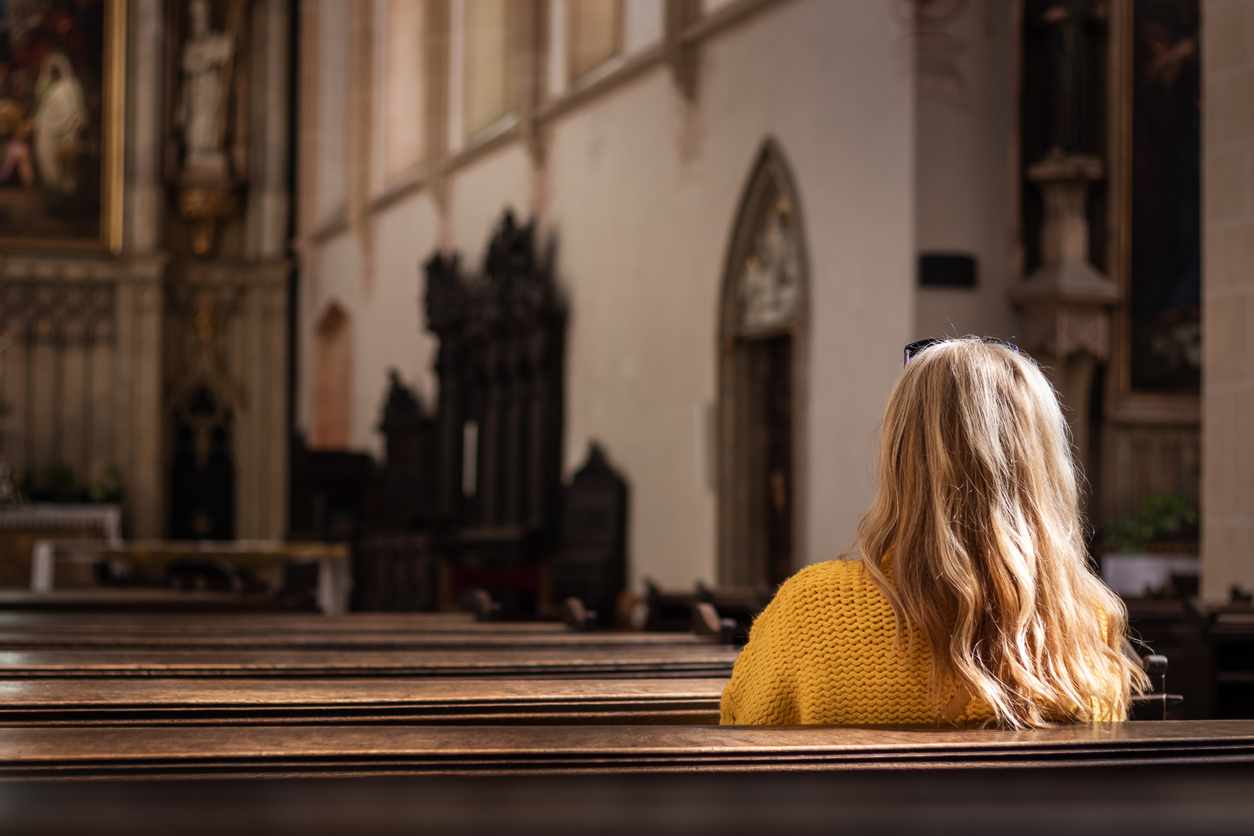“A new command I give you: Love one another. As I have loved you, so you must love one another. By this everyone will know that you are my disciples if you love one another.” – John 13:34-35
Parishioner engagement has been a popular topic as we have begun to reopen parishes. Dispensation has been lifted, yet this will not be enough to get people to come back to Mass. According to a July 14 article, Lifting dispensation is not enough to get Catholics back to in-person Mass. Marcel LeJeune, founder and president of Catholic Missionary Disciples, says: “ Just opening our doors and waiting for folks to come is a failed strategy for generations, much less for today’s culture.”
We definitely need to engage parishioners, but what do we mean by engagement? We, at times, may have lost sight of the broader meaning. In 2012, Al Winseman published Growing an Engaged Church based on decades of research done by George Gallup regarding spiritual commitment. Winesman applied the research to what makes a healthy church. He found that the communal and relational aspects of the church are primary influencers and that belonging leads to believing. This concept was a departure from the historical approach in many Catholic parishes; however, Gallup went on to provide data and research specifically for Catholics. One of the key insights is that engagement is a journey of levels:
1. What do I get?
2. What can I give?
3. Do I belong?
4. Where are we going/Am I growing?
While research shows that personal invitation is the most effective way to get people to join a church, the journey must include significant hospitality, spirituality, and relationship along with an organizational vision and direction.
Those parishes who embraced a practice of hospitality, engagement, and stewardship in the past likely were those who reached out to connect with parishioners during the pandemic. Yet, there is a big hurdle from the start. The data has shown a decades-long decline in Mass attendance among Catholics. With 30% or fewer attending Mass at least once a month, those occasional Mass-goers have gotten out of the habit of coming to Mass. “When churches were closed, people got out of the social ritual practice of going to Mass on Sunday,” Michael McCallion, a theology professor at Sacred Heart Major Seminary, said in an interview with Detroit Catholic, the online news outlet for the Archdiocese of Detroit. “Especially for those on the fence — perhaps about a number of other issues that have nothing to do with the pandemic — that practice might not resume,” McCallion added. “In the sociology of conversion, belief follows behavior. If we get out of the behavior, the belief fades as well.”
Too often, our efforts of engagement have stopped at the invitation. We leave it to the individual to find their way after that. Some stop coming or come only occasionally out of a sense of duty, perhaps looking for community. Worse yet, we invite people to Mass and assume they will come back. This is a non-starter for those who are not familiar with the Mass. Without building the relationship and introducing people to a community, we have given them little reason to return. In Forming Intentional Disciples, Sherry Weddell references the Shaup and Evers model of The Five Thresholds of Conversion: 1. Initial trust, 2. Spiritual Curiosity, 3. Spiritual Openness, 4. Spiritual Seeking and 5. Intentional Discipleship. The five thresholds add a spiritual dimension to the steps of engagement as described by Winesman. This also indicates that our path requires both the support of the parish and personal curiosity and openness. The culture of the people in the parish and an integral culture of evangelization become the factors that move people into greater engagement and foster an opportunity to experience a personal relationship with Christ.
One of the students at DeSalle Collegiate High School in the Archdiocese of Detroit started up a Teen Summer Mass Series, which includes time for fellowship: “Teens like having fun and having food,” he told Detroit Catholic. “There will be a snow cone truck and fellowship for one night, and we’ll have games and fun get-togethers for a brief amount of time after each of the Masses.” This activity helps to build trusting relationships, which create the initial engagement with the parish community. Then it is up to us and our parish to create the opportunities to encounter Christ through us and awaken spiritual curiosity in the person.
Now is the time to welcome your parish family, whether they are in person or remote. Engage them in the community and make it easy to stay connected in person and virtually. And then we need to do more. Create opportunities for encounters with the Holy Spirit through our example, our kindness, and our caring.
Marcel Lejeune summarizes it this way for living in a post-pandemic parish: “Let us love each other fully. Let us serve our communities. Let us fight for what is true and good,” and “Let us not settle for what our parishes looked like in the past.”
Terry Poplava is a multi-disciplined executive with extensive sales, product marketing, strategy and leadership experience in supporting faith organizations. Terry’s professional experience includes organizational leadership, corporate development and growth, consulting with and training church leaders, and leading strategic and priority planning for churches and dioceses. He currently serves on the advisory board for the National Shrine of Our Lady of La Leche in St. Augustine FL, as cantor at St. Andrew parish in Myrtle Beach, SC. and recently as Chairman of the Finance Council at St. Mary the Virgin Mother parish in Hartsville, SC.
Please look for more information in our Church Engagement blogs
Or download our Gearing up for Fall Events guide




